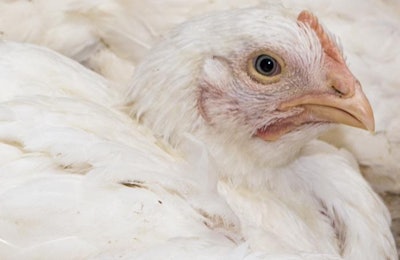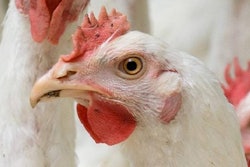
Only Cambodia and South Africa reported new cases of highly pathogenic avian influenza (HPAI) in commercial poultry last week, but in Europe, the viruses continue to be detected in wild birds, and the low-pathogenic form of the disease has been confirmed in France and Italy.
There has been one new confirmed outbreak of HPAI caused by the H5N1 virus variant, according to the latest report from Cambodia’s Ministry of Agriculture, Forestry and Fisheries to the World Organisation for Animal Health (OIE). A farm in Siem Reap province in the north-west of the country lost 200 birds to the disease through mortality or culling. This was the ninth outbreak since the disease returned to Cambodia in November last year.
The animal health agency in Bangladesh has sent a final report to the OIE regarding H5N1 HPAI outbreaks in the wild bird population. The only cases reported were in two groups of wild crows in Dhaka four months ago.
Africa: More HPAI in South Africa
South Africa’s battle to control HPAI linked to the H5N8 virus subtype continues. The country’s department responsible for animal health has reported to the OIE an outbreak of the disease at a commercial ostrich farm in Western Cape Province in mid-February. There were 23 cases among the 384 birds, and one died.
The same virus was detected at three further outbreaks in wild birds and hobby flocks, dating back as far as October of 2017. Affected were a non-commercial flock of ducks and geese in Cape Town, wild sea birds in Eastern Cape Province, and a group of swans in North West Province. These cases bring the country’s total outbreaks since mid-2017 to 169.
Europe: low-pathogenic avian flu in France, Italy
In the commercial poultry sector in Europe, it is low-pathogenic avian influenza (LPAI) viruses that are being detected either as the result of flock surveillance, or following cases of mild disease or production drops.
France’s ministry of agriculture and food has reported to the OIE two different LPAI viruses in the poultry sector. The first is an H5N5 strain, which is new to the country. This virus was detected in a flock of 13,000 ducks ready for gavage in the department of Sarthe in the north-west of the country. The farm had experienced moderate losses among its 2,500 turkeys. The ducks showed no signs of disease but tested positive for the LPAI virus, and were culled. Cause of mortality among the turkeys was subsequently identified as blackhead.
Sarthe was also the location of the farm where H5N1 LPAI returned last month after an absence of 11 months. Mild symptoms of prostration and delayed egg-laying were observed in a flock of almost 9,000 breeding turkeys. After the virus was confirmed, all the birds were culled.
A second poultry flock in Italy has tested positive for LPAI, according to the Italian health authority and research organization for animal health and food safety (IZSVe). A low-pathogenic virus of the H5N1 subtype was detected at a farm with around 1,200 birds of various species in the province of Milan in Lombardy. All the birds have been humanely destroyed.
This LPAI outbreak follows six others in 2017, in which the same virus or an H5N2 subtype were detected, and one this year in the region of Emilia-Romagna, where an H5N7 virus was picked up at a commercial duck farm as the result of the national monitoring program.
Veterinary authorities in Finland and Slovakia have reported to the OIE detecting the HPAI virus of the H5N6 in wild birds for the first time. For Finland, the eagle was a first case in the country, and a dead gull in Slovakia represented a return of the virus that had been absent since mid-2017.
The same virus has been detected in a further four wild eagles at different locations in Denmark, according to the latest official agriculture ministry report to the OIE.















